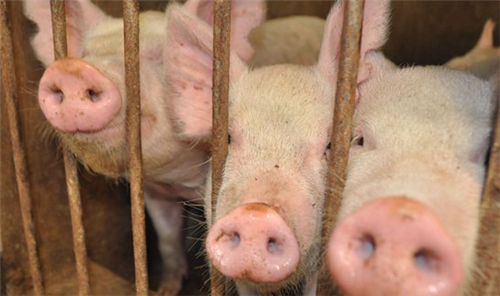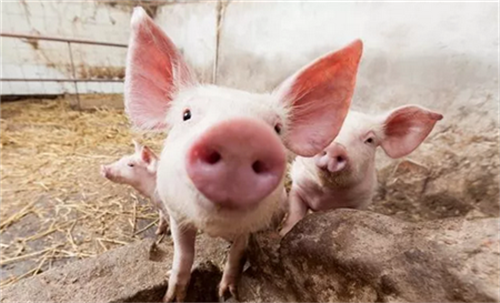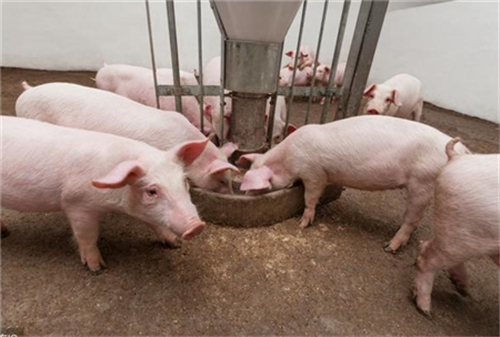Acute, high fever, mortality 80%! The pig farm is most afraid of it in the hot and rainy season!
I. Overview of Porcine erysipelas
Porcine erysipelas is an acute and febrile infectious disease caused by erysipelas suis. It mainly occurs in shelf pigs at the age of 3 to 12 months, and the susceptibility decreases with the increase of age. It can happen all the year round, and the hot and rainy season is the most popular, and the mortality rate can be as high as 80%.
Second, the cause of disease
The ① enclosure is dirty and damp.
Wet feeding of ② feed, especially if dairy by-products are used, will promote the reproduction of pathogens.
③ water diversion system is contaminated by pathogen
④ ingestion of feces
Stress caused by transfer and mixed herd of ⑤ pigs
Abrupt change of ⑥ temperature, high temperature in summer
⑦ drinking water system is contaminated by pathogen
⑧ suddenly changed the diet.
⑨ continuous production, no empty house disinfection
⑩ virus infection, especially reproductive respiratory syndrome and influenza
Pig houses covered with straw in ⑪ habitat are more likely to occur because erysipelas can survive in straw.
III. Clinical symptoms
1. Acute type
This type is common and is characterized by sudden outbreaks, acute episodes and high mortality. Diseased pigs are lethargic and have a high fever; do not eat and vomit; conjunctival congestion; dry and hard feces, with mucus. The piglet has dysentery in the later stage. The skin of the ear, neck and back is flushed and purple. Before death, there were irregular bright red plaques in the armpit, thigh and abdomen, which faded after finger pressure faded. They often die within 3-4 days, and the undead turn to rash mass or chronic type.
2. Subacute type (rash type)
The disease is mild, the first one or two days in the chest, back, neck to the whole body appear obvious boundaries, round, quadrilateral, hot rash, commonly known as & # 39; fire marks & # 39, finger pressure fade. The rash block protrudes the skin 2-3 mm, about one to several centimeters in size, ranging from several to dozens, and forms brown crusts after drying up. Sick pigs have thirst, constipation, vomiting and high body temperature. After the occurrence of the rash, the body temperature began to drop and the disease alleviated. After several days or even more than 10 days, the diseased pigs recovered on their own. There are also many sick pigs in the course of the disease, the symptoms worsened and changed to septic type and died. The course of the disease is about 1-2 weeks.

3. Chronic type
It changes from acute or subacute type, and there are also primary ones, such as chronic arthritis, chronic endocarditis and skin necrosis.
Chronic arthritis is characterized by inflammatory swelling of the joints of the extremities, stiffness and pain of the diseased legs, claudication of one or two limbs or inability to lie on the ground. Sick pigs have a normal appetite, but slow growth, weak physique and emaciation. The course of the disease is weeks or months.
Chronic endocarditis mainly shows emaciation, anemia, general weakness, like lying, tired of walking, forced to walk, then slow behavior, whole body shaking, shortness of breath. The disease cannot be cured in pigs and usually falls to the ground and dies suddenly due to heart paralysis. The course of the disease ranges from weeks to months.
Chronic porcine erysipelas sometimes cause skin necrosis. It often occurs in the back, shoulder, ear, hoof and tail. The local skin is swollen, bulging, necrotic, black, dry and leathery.
IV. Autopsy symptoms
Gastric and intestinal mucosal congestion, bleeding, liver congestion is reddish brown, kidney swelling is dark red, surface bleeding spots, splenomegaly is cherry red, soft, section bulge, spleen pulp is easy to scrape off. The lymph nodes are congested and swollen, showing red or black-red, juicy section and bleeding spots. The rash type is characterized by skin rash. Chronic joint swelling with a large amount of serous fibrous exudate, sticky or red. There are verrucous vegetations in the endocardium, like cauliflower.
Myocardial surface hemorrhage
Diffuse hemorrhage occurred in the fundus of stomach
There is no obvious enlargement of kidney.
The spleen is dark and the swelling is not obvious.
Ulcer and scab
Congestion of the lungs
V. Prevention and control plan
1. Medicine and health care
In the high incidence season, the following drugs can be added alternately in the feed: cephalosporins, amoxicillin, tylosin, some tetracyclines. The biosafety measure of farm is the most important measure to control PRRS, and pay attention to the "food, clothing, housing and transportation" of pigs.
2. Managers pay close attention to it.
Pay close attention to fever (40-43 ℃), conjunctival flushing, redness all over the body, sudden death without papules, and a special person is responsible for following up the improvement of the disease.
3. Do a good job of environmental disinfection
Focus on the humidity and hygiene of breeding houses, pregnancy houses and sports grounds, timely and appropriate hurdle disinfection, especially regular thorough washing and disinfection of breeding houses. Ensure that there is no stagnant water in the playground, spread materials and disinfect regularly, potassium permanganate can be used.
4. Regular body surface deworming
The concentration and frequency of deworming drugs on the body surface should be reasonable to ensure the integrity of pig skin.
5. Do a good job of related immunity
To do a good job of related immunization, breeding pigs should be immunized once every half a year. Attenuated vaccine immunization: drinking water or mixing immunity, every other week to do a booster immunity.
The use of antibiotics and Chinese herbal medicine should be suspended for a week before and after immunization. Immune water should be clean and do not add any disinfectants. Do not use fermented or rancid feed or hot water to mix ingredients.
VI. Treatment plan
1. Treatment of diseased pigs
Early detection and early treatment, when there are a few suspicious cases in the local area, timely innocuous treatment of suspected diseased pigs, isolation and disinfection of contaminated areas, and packing of pig manure.
2. Drug therapy
Select sensitive drugs to treat the whole unit or whole herd of diseased pigs, such as amoxicillin, cephalosporin, penicillin, plus VC and multi-dimensional, heat-clearing and detoxifying Chinese herbal medicine for 5 days.
Acute cases can be treated with quick-acting penicillin twice a day for three consecutive days, or long-acting penicillin, one-time treatment, covering 48 hours, and then again.
3. Use and cleaning of the playground
Suspend the use of the pig farm sports ground, turn or change the sand, disinfect the sports ground with disinfectant and keep the water flowing smoothly without stagnant water. Strengthen the disinfection of material trough, drinking water and environment.
4. Vaccination
If there are individual cases among fattening pigs, the enclosure should be cleaned and disinfected between different batches. If growing pigs continue to get sick, it is necessary to take immunization, once at the age of 8 weeks, preferably at the age of 10 to 12 weeks. Generally 8 weeks before the vaccination, because maternal antibodies will affect the effect of vaccination.
- Prev

Without antibiotics, how can piglets not have diarrhea
Without antibiotics, how can piglets not have diarrhea
- Next

Why are weaning piglets prone to diarrhea? These preventive measures are simple and effective.
Why are weaning piglets prone to diarrhea? These preventive measures are simple and effective.
Related
- On the eggshell is a badge full of pride. British Poultry Egg Market and Consumer observation
- British study: 72% of Britons are willing to buy native eggs raised by insects
- Guidelines for friendly egg production revised the increase of space in chicken sheds can not be forced to change feathers and lay eggs.
- Risk of delay in customs clearance Australia suspends lobster exports to China
- Pig semen-the Vector of virus Transmission (4)
- Pig semen-the Vector of virus Transmission (3)
- Five common causes of difficult control of classical swine fever in clinic and their countermeasures
- Foot-and-mouth disease is the most effective way to prevent it!
- PED is the number one killer of piglets and has to be guarded against in autumn and winter.
- What is "yellow fat pig"? Have you ever heard the pig collector talk about "yellow fat pig"?

